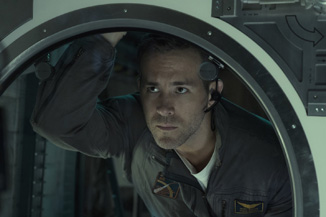|
|
Movie Review: LifeBy Ben GruchowApril 4, 2017
For the remainder of the film, where we would normally be watching the otherwise-tiresome spectacle of characters creeping along corridors and being ambushed by a slithery creature effect, we are witnessing the characters instead possessed by the increasing drive to be better at survival instinct and tactics, as the consequences and stakes become more and more dire and wins and losses pile up for both parties almost by accident. When we arrive at a scene where a character expresses hatred as a persistent feeling toward Calvin, it's in some ways the most disquieting moment in the film: here is the bitter resentment felt by the losing side of the contest toward the essential nature of the other. As catharsis, it’s cold and clinical, and yet not unsentimental…nor is a moment somewhat later, evoking reconciliation with fate by way of a meditative and chilling storybook recitation. These qualities, pragmatic and austere without being antiseptic, elevate almost the entire film to the level of being a great snapshot of unexpected, straitlaced horror. Almost. For it's also right around this moment of reflection that the movie whipsaws back on itself and decides to tag an extended coda onto the story by way of a last-minute plan. If you squint your eyes and cock your head just right, you can make out the shape of an additional wrinkle on the movie’s philosophy on survivalism and tactics in this redirection; that doesn't make it any less harmful to the graceful wind-down that we were previously approaching. What was shaping up to be a unique and creeping minor classic in the pantheon of exobiological horror morphs at the last minute into a sting reminiscent of a much more misanthropic and callous piece of work, and did it ever irritate me. It thankfully does not do enough damage to indict the bulk of what comes before, and it does at least do one final bit of justice to the movie, which also involves the shapes taken by Calvin at the movie’s center. This is an authentically scary creature, mostly so early on as a collection of eerie, Lovecraftian stalks and fronds; as it grows and changes, it starts to develop a slightly more typical monstrous form (albeit still an effective one). Its final appearance in the film fully embraces that abstracted and alien aesthetic, and it helps alleviate the lesser function of the story. This is surprisingly resilient and self-aware genre cinema, better than we expect. It works. 4 out of 5
|

|
|
|

|
Friday, November 1, 2024
© 2024 Box Office Prophets, a division of One Of Us, Inc.


